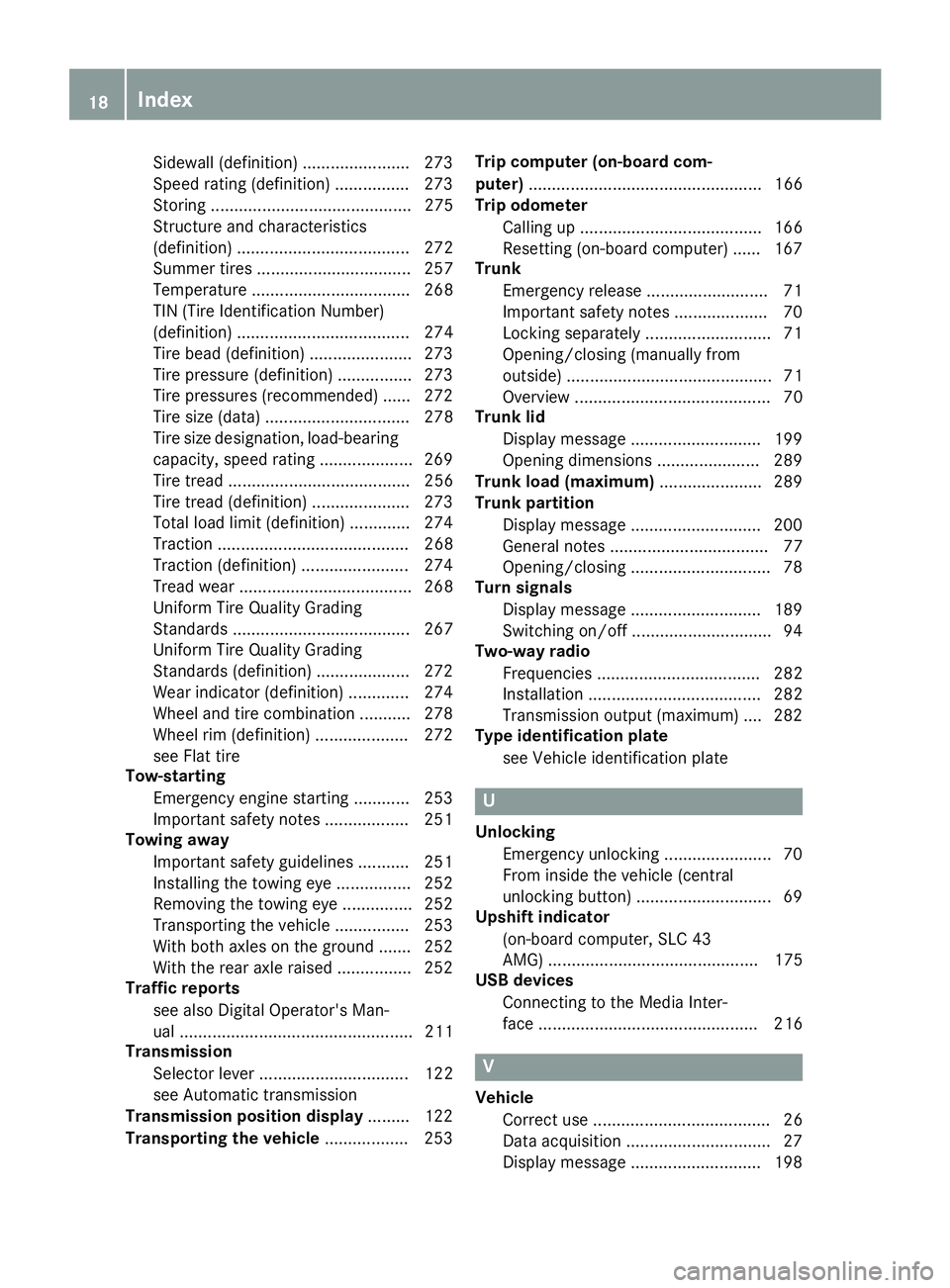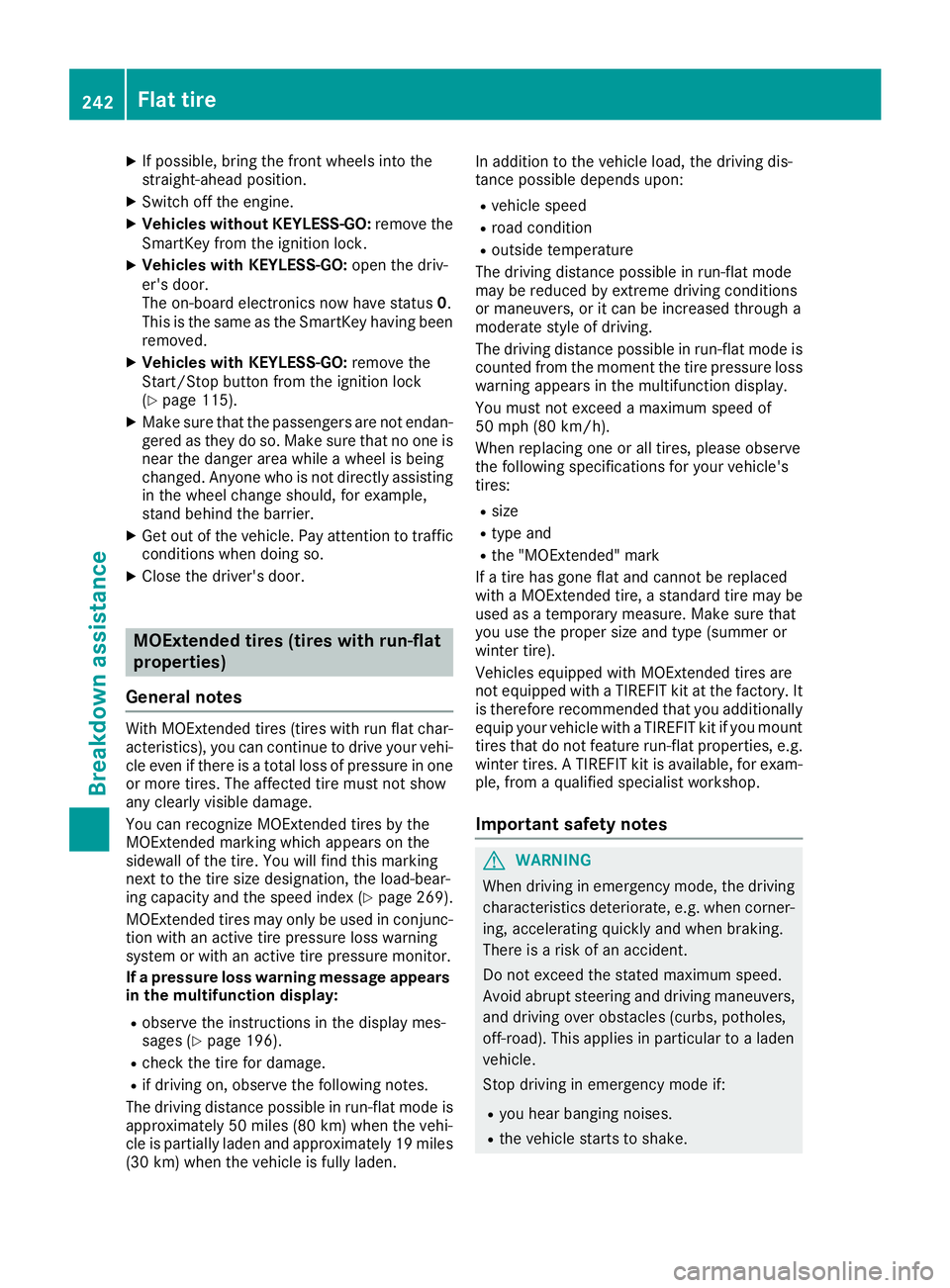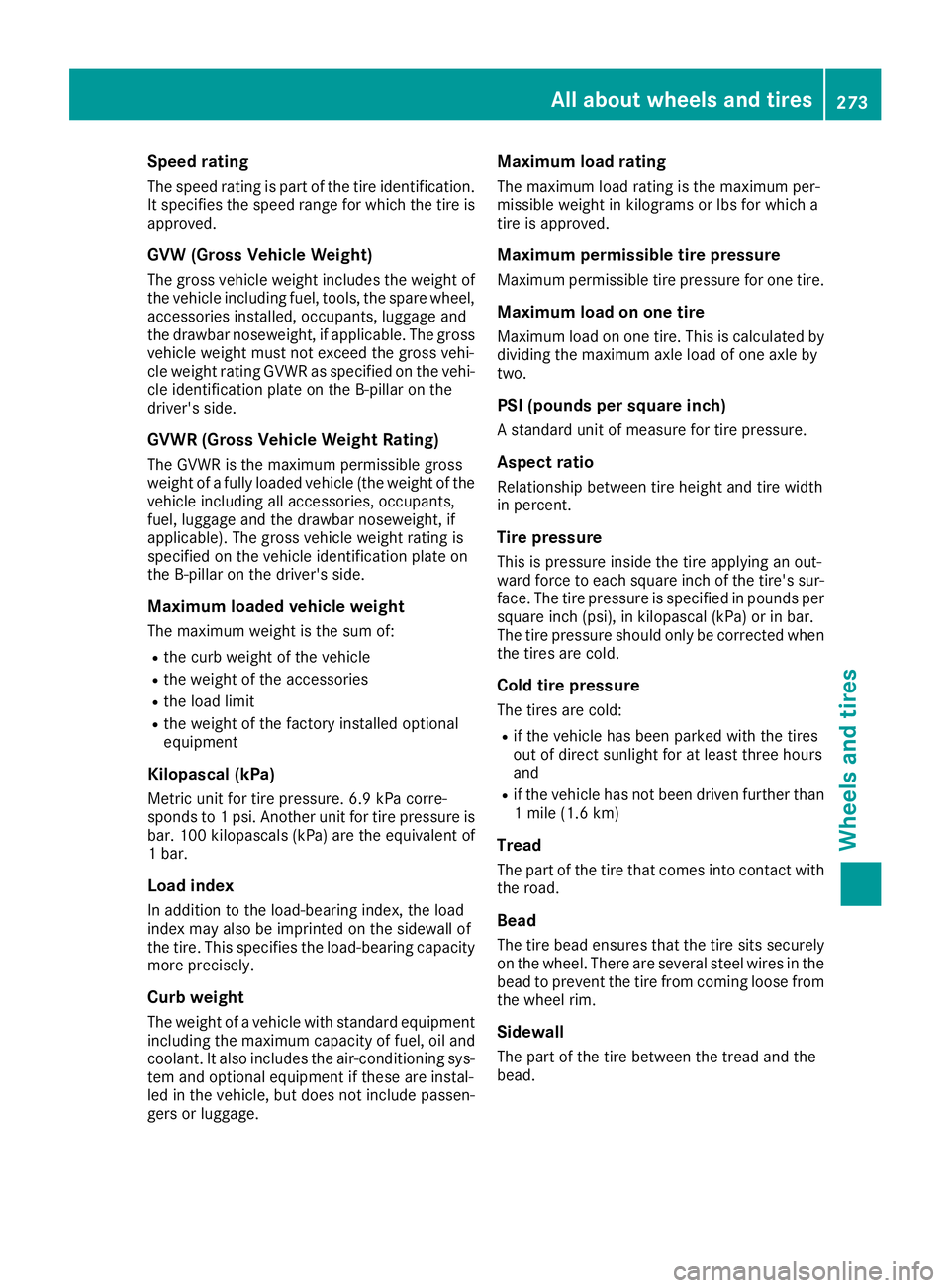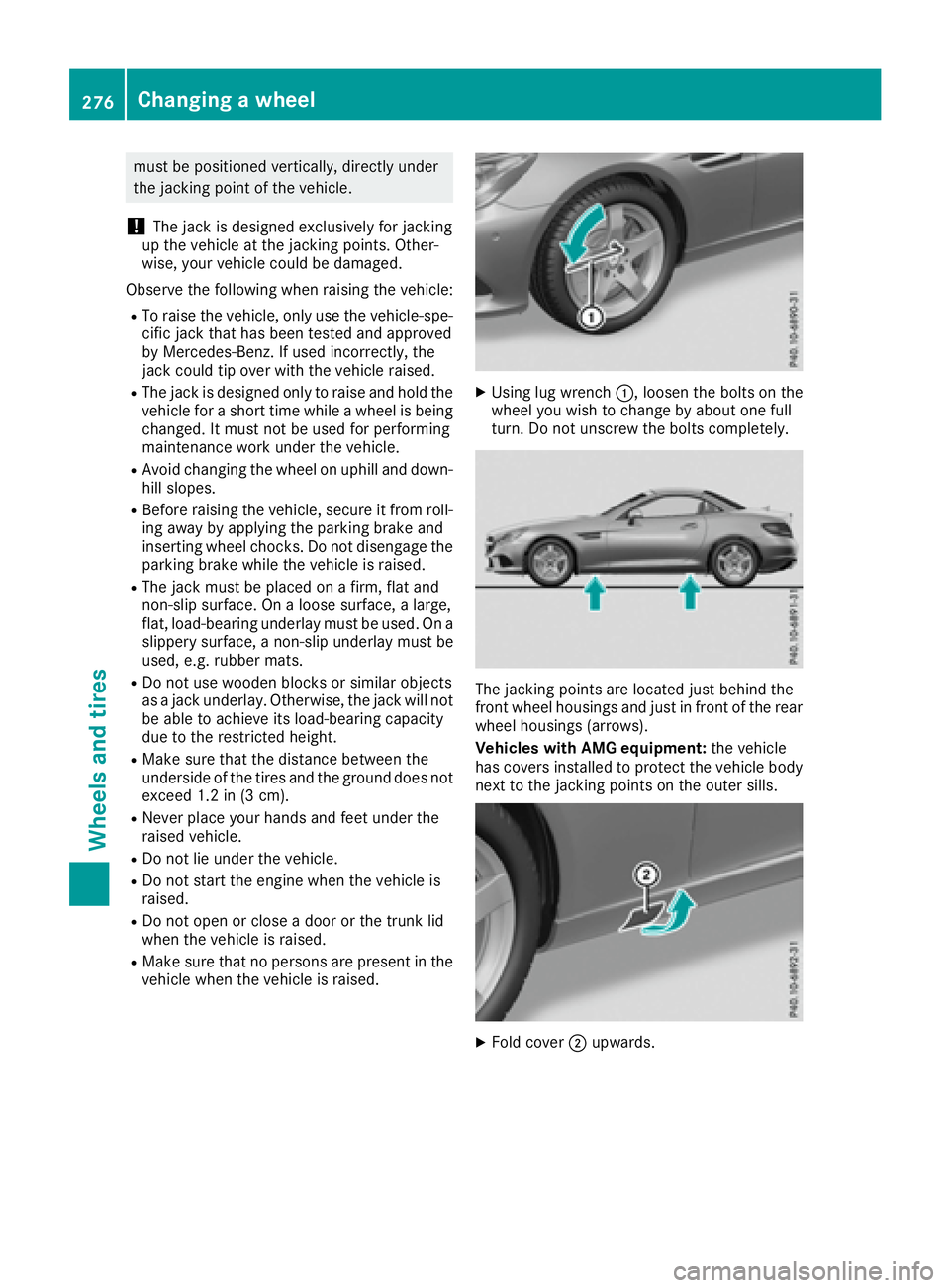load capacity MERCEDES-BENZ SLC 2017 Owners Manual
[x] Cancel search | Manufacturer: MERCEDES-BENZ, Model Year: 2017, Model line: SLC, Model: MERCEDES-BENZ SLC 2017Pages: 294, PDF Size: 9.12 MB
Page 20 of 294

Sidewal l( de finition) ....................... 273
Speed rating (definition) ................ 273
Storing ........................................... 275
Structure and characteristics
(definition) ..................................... 272
Summer tire s. ................................ 257
Temperature .................................. 268
TIN (Tire Identification Number)
(definition) ..................................... 274
Tire bead (definition) ...................... 273
Tire pressure (definition) ................ 273
Tire pressures (recommended ). ..... 272
Tire size (data ). .............................. 278
Tire size designation, load-bearing
capacity, speed rating .................... 269
Tire trea d. ...................................... 256
Tire trea d( de finition) ..................... 273
Tota ll oa dl im it (definition) ............. 274
Tractio n. ........................................ 268
Tractio n( de finition) ....................... 274
Tread wear ..................................... 268
Uniform Tire Quality Grading
Standard s. ..................................... 267
Uniform Tire Quality Grading
Standard s( de finition) .................... 272
Wea ri ndicator (definition) ............. 274
Wheel and tire combination ........... 278
Wheel rim (definition) .................... 272
see Fla tt ire
Tow-starting
Emergency engine starting ............ 253
Important safety notes .................. 251
Towin ga way
Important safety guideline s. .......... 251
Installing the towing ey e. ............... 252
Removing the towing ey e. .............. 252
Transporting the vehicl e. ............... 253
With both axles on the ground ....... 252
With the rea ra xl er aised ................ 252
Traffi cr eports
see also Digital Operator's Man-
ua l. ................................................. 211
Transmission
Selector lever ................................ 122
see Automati ct ransmission
Transmission position display ......... 122
Transporting the vehicle .................. 253 Trip computer (on-board com-
puter) .................................................. 166
Trip odometer
Calling up ....................................... 166
R e
setting (on-board computer) ...... 167
Trunk
Emergency release .......................... 71
Important safety notes .................... 70
Locking separatel y. .......................... 71
Opening/closing (manuall yf rom
outside) ............................................ 71
Overview .......................................... 70
Trunk lid
Displa ym essage ............................ 199
Opening dimensions ...................... 289
Trunk load (maximum) ...................... 289
Trunk partition
Displa ym essage ............................ 200
Genera ln otes .................................. 77
Opening/closing .............................. 78
Turn signals
Displa ym essage ............................ 189
Switching on/of f. ............................. 94
Two-wa yr adio
Frequencie s. .................................. 282
Installation ..................................... 282
Transmission outpu t( maximum) .... 282
Type identificatio np late
see Vehicl ei de ntification plate
U
Unlocking
Emergency unlocking ....................... 70
From inside the vehicl e( central
unlocking button) ............................. 69
Upshif ti nd icator
(on-board computer, SLC 43
AMG ). ............................................ 175
USB devices
Connecting to the Media Inter-
face ............................................... 216
V
Vehicle
Correct us e. ..................................... 26
Data acquisition ............................... 27
Displa ym essage ............................ 19818
Index
Page 244 of 294

X
If possible, bring the front wheel si nto the
straight-ahea dp osition.X
Switch off the engine. X
Vehicles without KEYLESS-GO: remove the
SmartKey from the ignition lock. X
Vehicles with KEYLESS-GO: open the driv-
er's door.
The on-board electronics now have status 0 .
This is the same as the SmartKey having been
removed. X
Vehicles with KEYLESS-GO: remove the
Start/Stop button from the ignition lock
( Y
page 115).X
Make sure that the passengers are not endan-
gered as they do so. Make sure that no one is
near the danger area whil eaw heel is being
changed. Anyone who is not directly assisting
in the wheel change should, for example,
stand behind the barrier. X
Get out of the vehicle .P ay attention to traffic
conditions when doing so. X
Clos et he driver's door.
MOExtended tires (tires with run-flat
properties)
General notes With MOExtended tires (tires with run flat char-
acteristics), you can continue to drive you rv ehi-
cle even if there is at otal loss of pressure in one
or more tires. The affected tire must not show
any clearl yv isible damage.
You can recognize MOExtended tires by the
MOExtended marking which appears on the
sidewall of the tire. You wil lf ind this marking
next to the tire size designation, the load-bear-
ing capacity and the speed index ( Y
page 269).
MOExtended tires may only be used in conjunc-
tion with an active tire pressure loss warning
system or with an active tire pressure monitor.
If ap ressure loss warning message appears
in the multifunction display: R
observe the instructions in the display mes-
sages ( Y
page 196).R
check the tire for damage. R
if driving on, observe the following notes.
The driving distance possible in run-flat mode is
approximately 50 miles (80 km) when the vehi-
cle is partially laden and approximately 19 miles
(30 km) when the vehicle is full yl aden. In addition to the vehicle load ,t he driving dis-
tance possible depends upon: R
vehicle speed R
road condition R
outsid et emperature
The driving distance possible in run-flat mode
may be reduced by extreme driving conditions
or maneuvers, or it can be increased through a
moderate style of driving.
The driving distance possible in run-flat mode is
counted from the moment the tire pressure loss
warning appears in the multifunction display.
You must not exceed am aximum speed of
50 mph (80 km/h).
When replacing one or all tires, please observe
the following specifications for you rv ehicle's
tires: R
size R
type and R
the "MOExtended" mark
If at ire has gone flat and cannot be replaced
with aM OExtended tire, as tandard tire may be
used as at emporary measure. Make sure that
you use the proper size and type (summe ro r
winter tire).
Vehicle se quipped with MOExtended tires are
not equipped with aT IREFIT kit at the factory. It
is therefore recommended that you additionally
equi py ou rv ehicle with aT IREFIT kit if y ou mount
tires
that do not feature run-flat properties, e.g.
winter tires. AT IREFIT kit is available, for exam-
ple, from aq ualifie ds pecialist workshop.
Important safety notes
G WARNING
When driving in emergency mode, the driving
characteristics deteriorate, e.g. when corner-
ing, accelerating quickly and when braking.
There is ar isk of an accident.
Do not exceed the stated maximum speed.
Avoid abrupt steering and driving maneuvers,
and driving over obstacle s( curbs, potholes,
off-road). This applies in particular to al aden
vehicle.
Stop driving in emergency mode if: R
you hear banging noises. R
the vehicle starts to shake.242
Flat tire
Breakdow na ssistance
Page 275 of 294

Speed rating The speed rating is part of the tire identification.
It specifies the speed range for which the tire is
approved.
GVW (Gross Vehicle Weight) The gross vehicle weight includes the weight of
the vehicle including fuel, tools, the spare wheel,
accessories installed, occupants, luggage and
the drawbar noseweight, if applicable. The gross
vehicle weight must not exceed the gross vehi-
cle weight rating GVWR as specified on the vehi-
cle identification plate on the B-pillar on the
driver's side.
GVWR (Gross Vehicle Weight Rating) The GVWR is the maximum permissible gross
weight of af ully loaded vehicle (the weight of the
vehicle including all accessories, occupants,
fuel, luggage and the drawbar noseweight, if
applicable). The gross vehicle weight rating is
specified on the vehicle identification plate on
the B-pillar on the driver's side.
Maximu ml oaded vehicle weightThe maximum weight is the sum of: R
the curb weight of the vehicle R
the weight of the accessories R
the load limit R
the weight of the factory installed optional
equipment
Kilopascal (kPa) Metric unit for tire pressure. 6.9 kPa corre-
sponds to 1p si. Another unit for tire pressure is
bar. 100 kilopascals (kPa) are the equivalent of
1b ar.
Load index
In addition to the load-bearing index, the load
index may also be imprinted on the sidewal lo f
the tire. This specifies the load-bearing capacity
more precisely.
Curb weight
The weight of av ehicle with standard equipment
including the maximum capacity of fuel, oil and
coolant. It also includes the air-conditioning sys-
tem and optional equipment if these are instal-
led in the vehicle, but does not include passen-
gers or luggage. Maximu ml oad ratingThe maximum load rating is the maximum per-
missible weight in kilograms or lbs for which a
tire is approved.
Maximu mp ermissible tire pressureMaximum permissible tire pressure for one tire.
Maximu ml oad on one tireMaximum load on one tire. This is calculated by
dividing the maximum axle load of one axle by
two.
PSI (pounds per squar ei nch)As tandard unit of measure for tire pressure.
Aspect ratio Relationship between tire height and tire width
in percent.
Tire pressure This is pressure inside the tire applying an out-
ward force to each square inch of the tire's sur-
face. The tire pressure is specified in pounds per
square inch (psi), in kilopascal (kPa) or in bar.
The tire pressure should only be corrected when
the tires are cold.
Cold tire pressure The tires are cold: R
if the vehicle has been parked with the tires
out of direct sunlight for at least three hours
and R
if the vehicle has not been driven further than
1m ile (1.6 km)
Tread
The part of the tire that comes into contact with
the road.
Bead
The tire bead ensures that the tire sits securely
on the wheel. There are several steel wires in the
bead to prevent the tire from coming loose from
the wheel rim.
Sidewall
The part of the tire between the tread and the
bead.All about wheel sa nd tires 273
Wheels and tires Z
Page 278 of 294

must be positioned vertically, directly under
the jacking point of the vehicle.
! The jack is designed exclusively for jacking
up the vehicl eatt he jacking points. Other-
wise ,y ou rv ehicl ec ould be damaged.
Observe the following when raising the vehicle: R
To rais et he vehicle, only use the vehicle-spe-
cific jack that has been tested and approved
by Mercedes-Benz. If used incorrectly, the
jack could tip over with the vehicl er aised.R
The jack is designed only to rais ea nd hold the
vehicl ef or as hort time while aw hee lisb eing
changed. It must not be used for performing
maintenance work under the vehicle. R
Avoid changing the whee lonu phill and down-
hill slopes. R
Before raising the vehicle, secure it from roll-
ing awa ybya pplying the parking brake and
inserting whee lc hocks. Do not disengage the
parking brake whil et he vehicl eisr aised.R
The jack must be placed on af irm, flat and
non-slip surface. On al oose surface, al arge,
flat, load-bearing underlay must be used .Ona
slippery surface, an on-slip underlay must be
used ,e .g. rubber mats.R
Do not use wooden blocks or similar objects
as aj ack underlay .O therwise, the jack wil ln ot
be abl etoa chieve its load-bearing capacity
due to the restricted height. R
Make sure that the distance betwee nt he
underside of the tires and the ground does not
exceed 1.2 in (3 cm). R
Never place you rh ands and feet under the
raised vehicle. R
Do not lie under the vehicle. R
Do not start the engine when the vehicl ei s
raised. R
Do not open or close ad oor or the trunk lid
when the vehicl eisr aised.R
Make sure that no persons are present in the
vehicl ew hen the vehicl eisr aised. X
Using lug wrench �C ,l oose nt he bolts on the
whee ly ou wish to change by abou to ne full
turn. Do not unscrew the bolts completely.
The jacking points are located just behind the
front whee lh ousings and just in front of the rear
whee lh ousings (arrows).
Vehicles with AMG equipment: the vehicle
has covers installed to protect the vehicl eb ody
next to the jacking points on the outer sills.
X
Fold cover �D upwards.276
Changing aw heel
Wheel sa nd tires